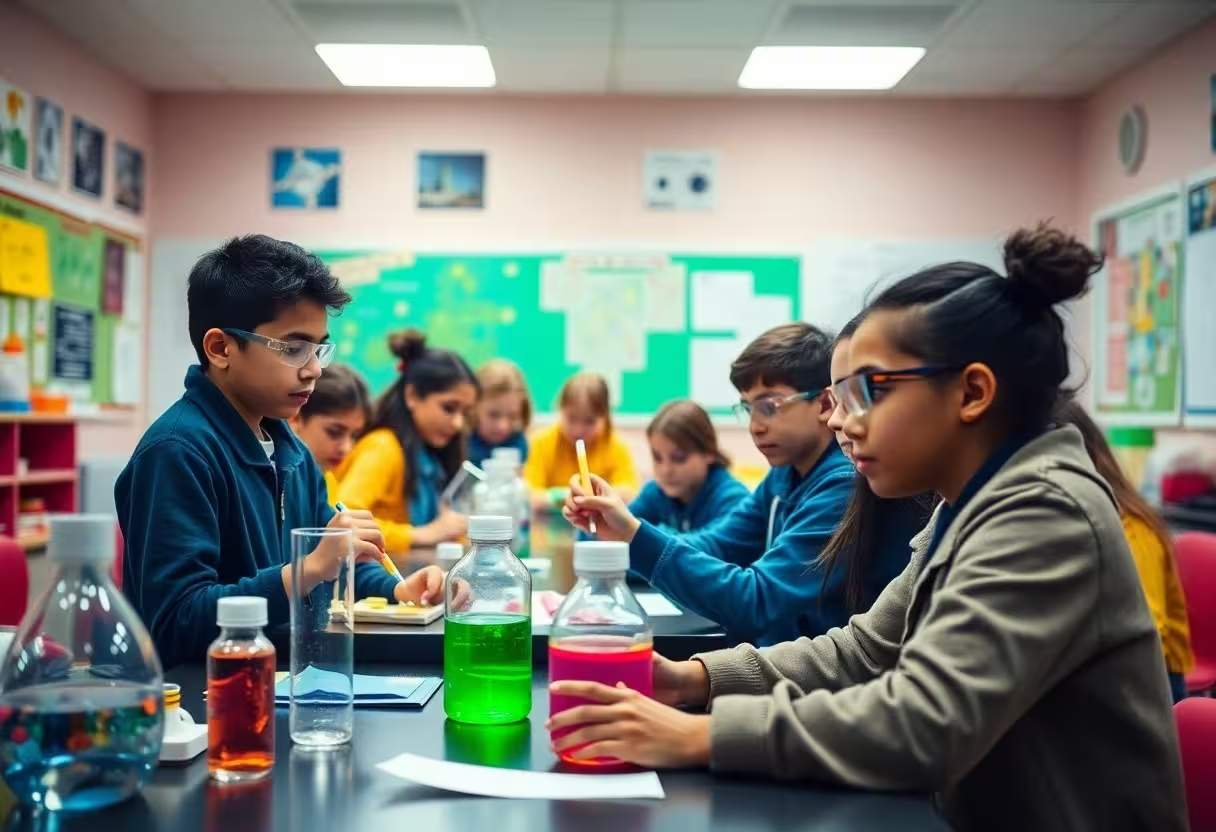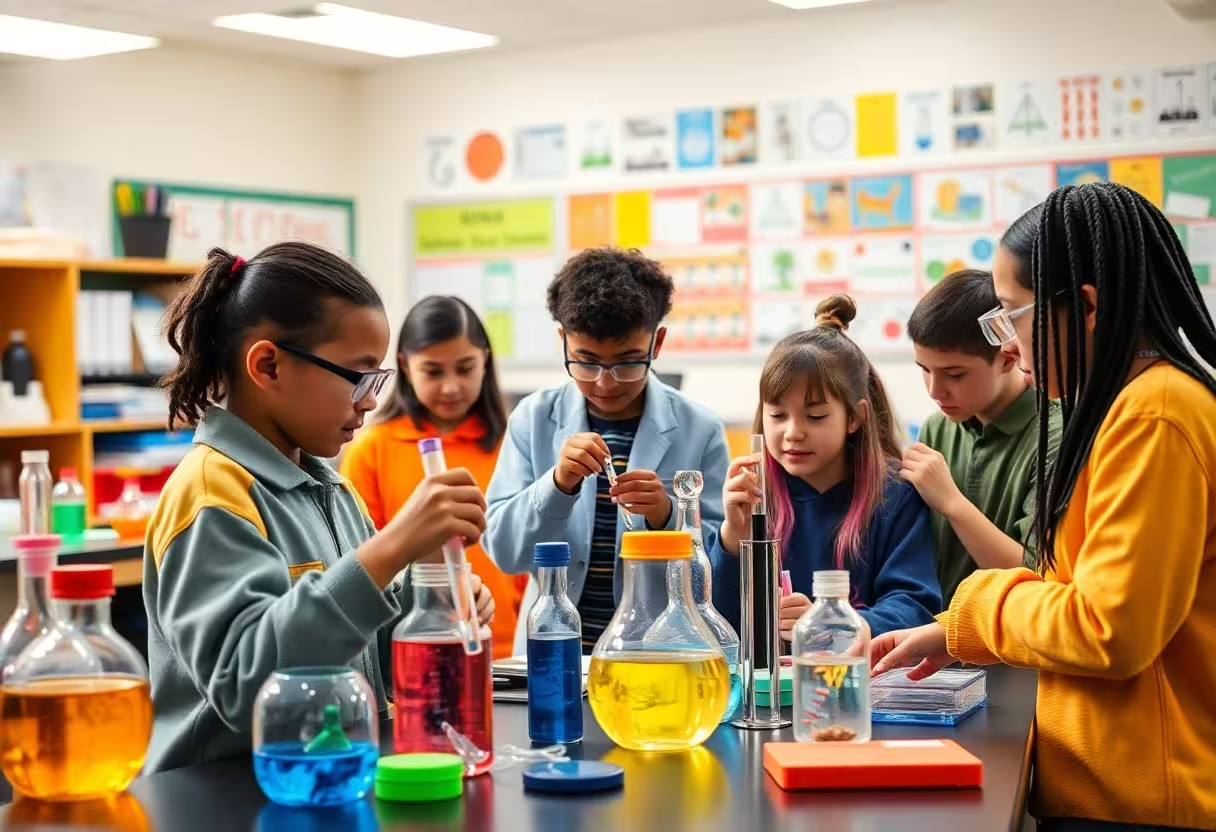You can transform your PSLE Science studies into an exciting adventure with a variety of engaging activities. By incorporating hands-on experiments, interactive games, and creative projects, you’ll not only enhance your understanding of scientific concepts but also keep your motivation high. This guide will explore practical ideas that make learning enjoyable while effectively preparing you for your exams. Let’s probe some exciting strategies that will turn science into your favorite subject!
How to Choose Engaging Science Topics
To create a captivating science study experience for your PSLE students, it is crucial to select topics that pique their curiosity and align with their interests. Explore themes that are not only relevant to the curriculum but also spark excitement in young minds. By incorporating fun and interactive subjects, you can increase their enthusiasm and engagement in science, paving the way for a deeper understanding of the material.
Identify Students’ Interests
Some effective ways to identify your students’ interests involve asking them about their hobbies and favorite activities. Use surveys or casual discussions to gather insights into what excites them. By focusing on topics that resonate with their preferences, you can tailor your lessons to create a more engaging learning environment.
Relate Topics to Real-Life Situations
For students to see the relevance of science in their daily lives, you should relate classroom topics to real-world situations they encounter. This approach helps them understand the practical applications of scientific concepts and fosters a sense of curiosity and relevance.
Science is all around us, and by showcasing how various scientific principles influence everyday life, you can make learning more relatable and enjoyable. Discuss examples such as the science behind weather phenomena, the biology of plants in their local environment, or the chemistry involved in cooking. These connections not only spark interest but also encourage critical thinking, making your lessons more impactful and memorable.
Tips for Incorporating Hands-On Activities
One effective way to make science study enjoyable for PSLE students is by incorporating hands-on activities into learning. These activities not only stimulate interest but also foster a deeper understanding of scientific concepts. Here are some tips to engage your students:
- Integrate experiments into daily lessons
- Use group projects to encourage collaboration
- Provide opportunities for outdoor exploration
- Encourage student-led demonstrations
Recognizing the importance of activity-based learning can significantly enhance your students’ engagement and interest in science.
Creating Simple Experiments
Tips for creating easy and accessible experiments include breaking down complex theories into smaller, manageable tasks. Engage your students by allowing them to design their own experiments, which promotes critical thinking and innovation. You can inspire them by demonstrating how simple concepts can lead to fascinating results, fostering an environment where curiosity thrives.
Utilizing Everyday Materials
Clearly, using everyday materials can transform standard lessons into exciting science experiments. Items like kitchen ingredients, cardboard, and recycled materials can be used to create compelling projects that demonstrate fundamental scientific principles. This approach not only saves costs but also encourages resourcefulness in your students.
Plus, by utilizing materials readily available in your home or classroom, you instill creativity and quick problem-solving skills in your students. Crafting experiments with these items means they can replicate them independently, reinforcing their learning experience. This approach makes science relatable and emphasizes its application in daily life, thus keeping students engaged and motivated.
How to Use Technology to Enhance Learning
Any effective study plan for the PSLE should incorporate technology to make learning more engaging. Embracing modern tools can enhance your understanding of complex scientific concepts through interactive experiences. By utilizing various technological resources, you can cultivate a deeper interest in science and improve your study habits.
Interactive Science Apps
Even the simplest interactive science apps can transform your study sessions into exciting learning experiences. By providing hands-on activities and simulations, these applications allow you to visualize abstract concepts, making them easier to grasp. Gamifying science content keeps you motivated and invested in your learning journey.
Online Educational Resources
Assuming you are seeking additional materials for your studies, online educational resources offer a wealth of information at your fingertips. Websites, video tutorials, and interactive platforms can supplement your classroom learning, providing you with diverse perspectives on scientific topics.
To further enrich your knowledge, leverage various online platforms tailored specifically for science education. Websites like Khan Academy, YouTube’s educational channels, and interactive websites like PhET provide unique resources that cater to different learning styles. With engaging videos, quizzes, and collaborative tools, you can explore topics at your own pace, reinforcing concepts discussed in class and developing a broader understanding of the subject matter.
Factors to Consider for Group Activities
Once again, planning group activities for science can enhance student collaboration and learning. When organizing these activities, consider the following factors:
- Students’ skill levels
- Group size and dynamics
- Available resources
- Time constraints
- Learning objectives
Recognizing these factors will help create engaging and productive group activities that cater to your students’ needs.
Team Dynamics
Some teams may have diverse dynamics that influence participation and learning outcomes. To ensure every voice is heard, balance different personalities, strengths, and preferences within your groups. Encouraging open communication fosters cooperation and inspires students to contribute effectively to their team chemistry.
Class Size and Resources
Factors like class size directly affect how you can structure group activities. Smaller classes allow for more intimate discussions, while larger groups can facilitate varied perspectives but may require more organization. Consider the resources available, such as materials, space, and technological support, as they determine the feasibility of specific activities.
Team collaboration can greatly benefit from the available resources. When allocating materials and tools, ensure that each group is equipped sufficiently to participate effectively. A well-resourced environment promotes interaction and experimentation, enriching the learning experience. Engaging your students with the right tools will make the activities more enjoyable and productive.
Tips for Encouraging Critical Thinking
For nurturing critical thinking in your students, consider integrating these engaging techniques into your science study sessions:
- Promote discussions that encourage diverse viewpoints.
- Encourage students to ask “why” and “how” questions.
- Use real-world examples to connect concepts to everyday life.
- Foster group activities that require collaborative problem-solving.
Assume that with consistent practice, your students will develop a more analytical mindset.
Open-Ended Questions
Little sparks of curiosity can ignite a student’s desire to explore. By asking open-ended questions during discussions, you encourage students to think deeply and articulate their thoughts. Questions like “What do you think would happen if…?” or “How can we investigate…?” promote critical exploration, making students feel empowered in their learning process.
Problem-Solving Challenges
You can engage students more effectively by incorporating problem-solving challenges into your science lessons. These activities require them to work through real-life scenarios, encouraging them to develop solutions collaboratively and think critically about various outcomes.
Another approach to problem-solving challenges is to present students with a scientific dilemma or experiment that needs resolution. For instance, ask them to devise a plan to reduce waste in their community or develop a simple machine to optimize a task. By involving them in hands-on activities and encouraging the application of scientific principles in novel contexts, they become more invested in the subject matter and enhance their critical thinking skills.

How to Assess Engagement and Understanding
All effective science study sessions hinge on accurately assessing your students’ engagement and understanding. This not only helps you identify areas where they may struggle but also allows you to tailor activities to enhance their enthusiasm for learning. By employing diverse assessment strategies, you can nurture a more interactive environment that promotes curiosity and deeper comprehension of scientific concepts.
Observation Techniques
Observation is a powerful tool for gauging student engagement during science activities. By actively monitoring your students, you can spot signs of interest or confusion. Look for body language, participation levels, and how students interact with their peers. These insights will help you identify when to adjust activities or provide additional support for a more enriching learning experience.
Feedback Methods
Clearly communicating feedback is imperative for fostering a supportive learning environment. Providing timely and constructive feedback helps your students understand their strengths and areas needing improvement, ensuring they feel valued and motivated to learn. Incorporating peer reviews or self-assessments can further enhance their learning experience by encouraging reflection and collaboration.
Engagement can be bolstered by creating opportunities for students to share their thoughts on activities and lessons. This dialogue not only demonstrates that you value their opinions but also helps you refine your teaching strategies. Regularly solicit feedback to encourage active participation, and consider implementing formal and informal methods, such as surveys or one-on-one discussions, to create a more dynamic science learning environment.
To wrap up
Drawing together various interactive activities can significantly enhance your experience in preparing for the PSLE science exam. By incorporating hands-on experiments, engaging games, and real-world applications, you can make your study sessions both enjoyable and effective. Embrace group collaborations and utilize educational resources that spark your curiosity. These strategies will help you develop a deeper understanding of scientific concepts while ensuring your study time is engaging and productive. Your journey in mastering science can be transformed into an exciting adventure that fosters a lifetime interest in the subject.
FAQ
Q: How can hands-on experiments enhance science learning for PSLE students?
A: Hands-on experiments provide students with practical experience that helps solidify theoretical concepts. When students engage in experiments, they can observe reactions and phenomena in real-time, allowing for a better understanding of scientific principles. Activities like making a simple volcano or growing plants can stimulate curiosity and make learning memorable.
Q: What are some interactive games that can be used to teach science concepts?
A: Interactive games such as Kahoot, Quizlet Live, or science board games can make learning fun. These games often incorporate competition and teamwork, allowing students to learn while enjoying themselves. Additionally, virtual lab games can simulate real scientific processes, making abstract concepts more relatable to students.
Q: How can storytelling be used to make science concepts more engaging?
A: Storytelling can be a powerful tool to explain complex scientific ideas. By weaving scientific concepts into stories, students can relate to characters and scenarios, which makes the material more engaging. Narratives about famous scientists, historical experiments, or even fictional tales that incorporate scientific principles can pique students’ interest.
Q: What role does technology play in making science study enjoyable for students?
A: Technology can transform traditional science lessons into dynamic learning experiences. Using apps for simulations, interactive video lessons, or online quizzes can captivate students’ attention. Virtual reality (VR) and augmented reality (AR) tools offer immersive experiences, allowing students to explore scientific concepts in a three-dimensional space.
Q: How can group projects provide a fun approach to learning science?
A: Group projects encourage collaboration and communication among students, fostering teamwork skills alongside scientific understanding. By working together on a project, such as building a model of the solar system or conducting a science fair experiment, students can learn from each other’s perspectives and engage more deeply with the material.
Q: What are some outdoor activities that can reinforce science learning?
A: Outdoor activities can bring science lessons to life. Organizing nature walks to observe ecosystems, conducting simple experiments related to weather patterns, or exploring local habitats can turn the real world into a classroom. These activities can help students connect scientific concepts to their surroundings, making learning more relevant and exciting.
Q: How can integrating art into science studies enhance student engagement?
A: Integrating art into science can provide a creative outlet for students to express their understanding of scientific concepts. Activities such as creating posters, dioramas, or digital presentations related to scientific topics can encourage students to think critically and visualize information differently, fostering a deeper connection to the material.

Leave a Reply